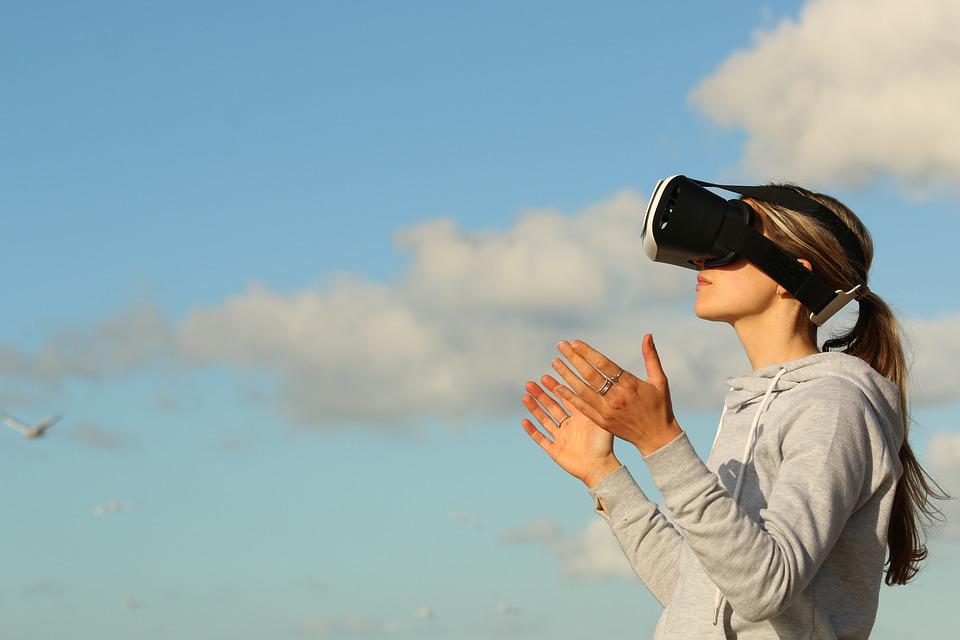Virtual reality and augmented reality represent the future of business for several sectors. Already some brands, particularly in the fields of apparel, furniture, and architecture, are making extensive use of them, with significant results from the standpoint of customer loyalty and increased sales.
Pandemic has further boosted the spread of virtual reality in the enterprise. The goal is to enable its customers, through an immersive experience, to observe, experience, and try its products without moving from home. So let’s see how virtual reality technologies can be a crucial enabler in business development.
Table of Contents
Virtual reality and augmented reality: the differences
Before we learn about their business applications, we should clarify something. Indeed, there is often confusion between the two terms. But what are the differences?
Virtual reality consists of the reproduction, from scratch, of an environment that is entirely different from the one you are in. This is what happens, for example, when, wearing a VR visor, we catapult to a Caribbean beach or a New York loft.
Augmented reality, on the other hand, adds some elements to the concrete reality in which you are placed or observing. Multimedia content that provides extra information or stimulates the senses through immersive technology. This method is often used in museums to complement the enjoyment of a work.
Virtual reality in the enterprise
The use of virtual reality in the business allows broad scope for business development due to the very high level of user engagement. For example, we can talk about immersive storytelling, that is, the possibility of telling the company’s story, values, and production processes in a completely new way. Just think of car manufacturers that allow test drives before purchase or furniture stores that will enable you to furnish a room in your home virtually.
Not only that. Virtual reality is also successful for training or human resources to facilitate personnel selection. On this occasion, it is possible to recreate a work environment and test, as if one were in the field, the candidate’s skills.
Also, the gambling world has changed in recent years, especially structurally and graphically. Indeed, gambling innovation has introduced increasingly technological, immersive, and fulfilling casino games through virtual reality. Just think of live dealer casinos games, which allow the user to participate at a casino table with a human dealer. The game is broadcast from a studio and transmitted in real-time to your computer or mobile device, allowing you to chat with the dealer and other players. Finally, we can say that a live casino combines the convenience, security, and privacy of an online casino with the immersion and realism of a land-based venue.
The application areas of virtual reality
INSERT IMAGE HERE >>> https://cdn.pixabay.com/photo/2018/05/18/15/32/vr-3411378_960_720.jpg <<< PHOTO CAPTION: virtual reality areas
Virtual reality represents a highly flexible and cross-cutting technology that can open up new scenarios in multiple sectors. However, some, more than others, lend themselves by their nature to its widespread use.
One of the first, as anticipated, is that of furniture and architecture. Here, virtual reality can make a difference because, very often, it is difficult to imagine a layout: from the kitchen in one’s home to the creation of major urban work.
Retaking the museum example, we must mention cultural products and services that, especially at this time, can take advantage of virtual reality to amplify the enjoyment of their content. However, perhaps the industrial sphere offers the most comprehensive scope for applying this technology. Instead of building prototypes, they will be able to be made in a virtual environment. At the same time, during the production process, it will be possible to intervene remotely to solve any problems. The same is happening in the medical field, where VR glasses enable surgeons to operate with extreme precision in the operating room.
VR and retail
Retail has perhaps been the sector that has seized an opportunity more than others this past year to find alternative ways to maintain contact with customers. In this process, beyond just online sales, augmented reality has played, and increasingly will play, a central role. Clothing is a case in point: virtual fitting rooms allow people to “try on” clothes with increasing accuracy. Thus, shopping moves from the store to the PC or smartphone screen.
This does not mean that physical contact is exhausted: instead, it is one more tool to improve and speed up the user experience. Leading tech companies are also focusing on virtual and augmented reality glasses, allowing the shopping experience to be literally in front of one’s eyes.
Think of trade shows or trade fairs, which are currently at a standstill for the past year: the world of virtual reality is an alternative that allows the user to maintain a very high quality of experience. Thus, one can comfortably “visit” a display from a distance, accurately grasping every detail. Sometimes with even greater peace of mind than one might experience in a “real” visit.


